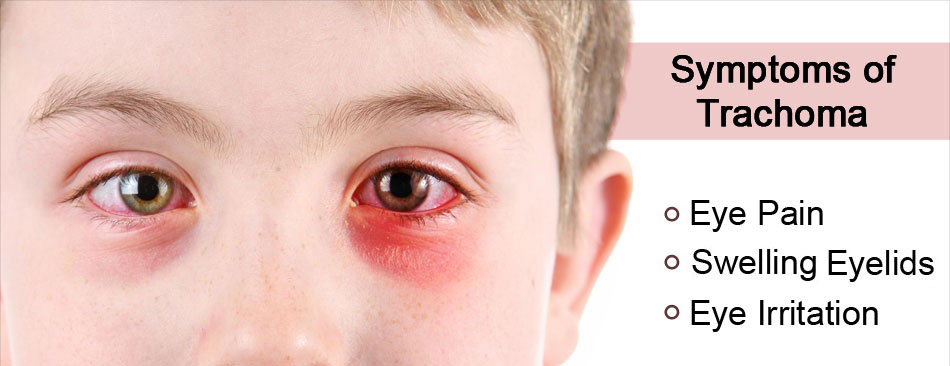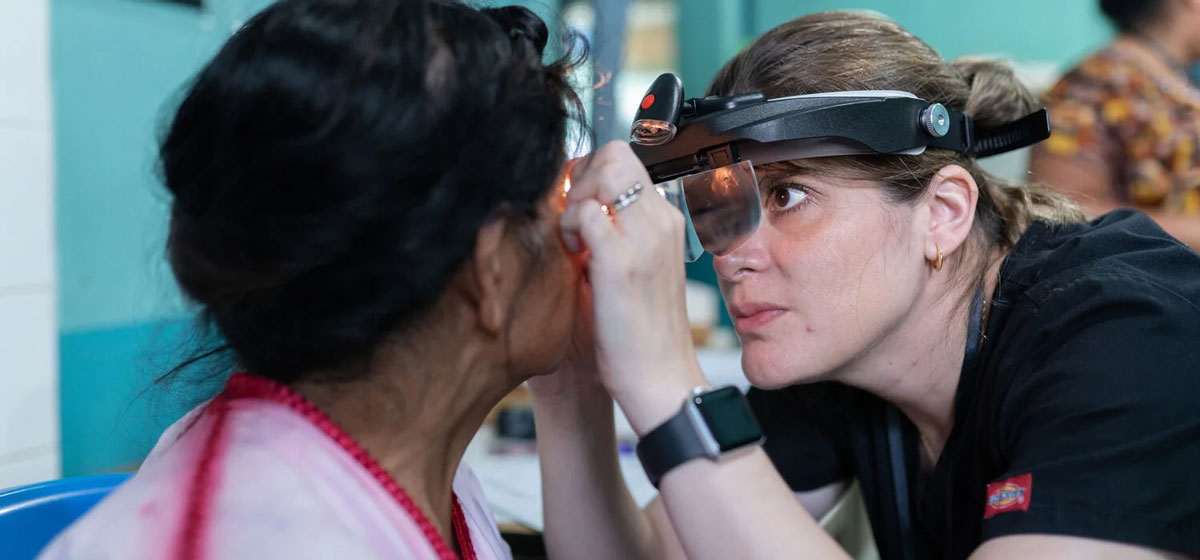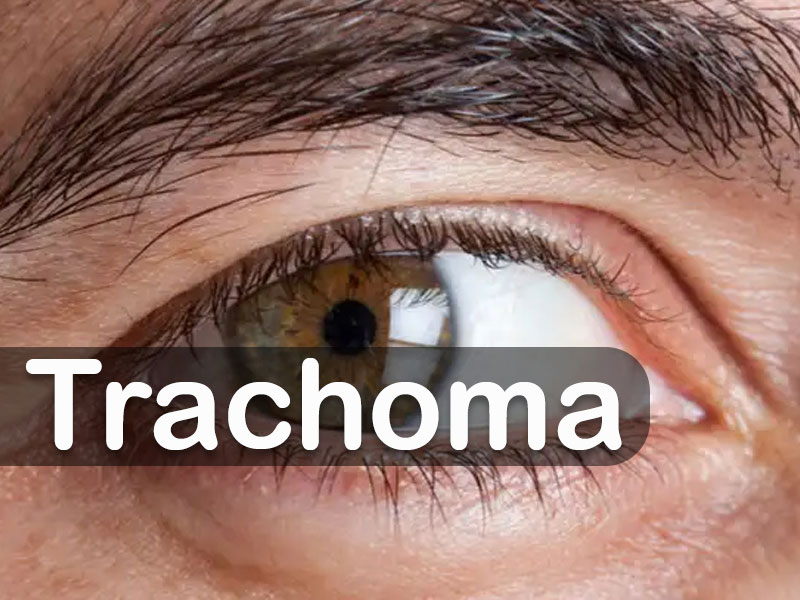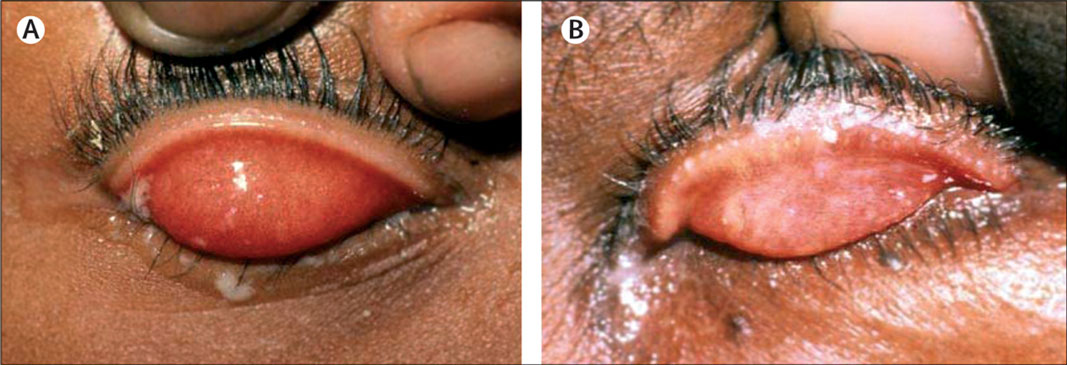WHAT IS TRACHOMA?
Trachoma is a bacterial infection that impacts your eyes. It is caused by the bacterium Chlamydia trachomatis. Trachoma is contagious and spreads through contact with the eyes, eyelids, and nose or throat secretions of infected people. It could also be passed on by handling infected items, like handkerchiefs.
At first, trachoma might cause mild itching and irritation of your eyes and eyelids. Then you might notice swollen eyelids and pus draining from the eyes. Untreated trachoma could lead to blindness.
Trachoma is the major preventable cause of blindness in the world. Most trachoma cases happen in poor areas of Africa, where 85 percent of people with active disease reside. In areas where trachoma is prevalent, infection rates among children under 5 could be 60 percent or more.
Early treatment might help prevent trachoma complications.
SYMPTOMS
Signs and symptoms of trachoma usually affect both eyes and might include:
- Mild itching and irritation to the eyes and eyelids
- Eye discharge containing mucus or pus
- Eyelid swelling
- Light sensitivity (photophobia)
- Eye pain
- Eye redness
- Vision loss
Young children are particularly vulnerable to infection. But the disease progresses gradually, and the more painful symptoms may not emerge until adulthood.
The World Health Organization (WHO) has identified 5 stages in the development of trachoma:
- Inflammation — follicular – The early infection has five or more follicles — tiny bumps that contain lymphocytes, a type of white blood cell — visible with magnification on the inner surface of your upper eyelid (conjunctiva).
- Inflammation — intense – At this stage, your eye is now highly infectious and becomes irritated, with a thickening or swelling of the upper eyelid.
- Eyelid scarring – Repeated infections result in scarring of the inner eyelid. The scars usually appear as white lines when examined with magnification. Your eyelid might become distorted and may turn in (entropion).
- In-turned eyelashes (trichiasis) – The scarred inner lining of your eyelid continues to deform, causing your lashes to turn in so that they rub on and scratch the transparent external surface of your eye (cornea).
- Corneal clouding (opacity) – The cornea becomes affected by an inflammation that is most frequently seen under your upper lid. Continuous inflammation compounded by scratching from the in-turned lashes results in the clouding of the cornea.
All the signs of trachoma are more serious in your upper lid than in your lower lid. Without intervention, a disease process that begins in childhood could continue to advance into adulthood.
WHEN SHOULD YOU SEE A DOCTOR?
Call your doctor if you or your child has itchy or irritated eyes or discharge from the eyes, particularly if you live in or recently traveled to an area where trachoma is common. Trachoma is an infectious condition. Treating it as soon as possible helps prevent severe infection.
CAUSES
Trachoma is caused by certain subtypes of Chlamydia trachomatis, a bacterium that could also cause the sexually transmitted infection chlamydia.
Trachoma spreads by contact with discharge from the eyes or nose of an infected person. Hands, clothing, towels, and insects could all be routes for transmission. In developing countries, eye-seeking flies are also a method of transmission.
RISK FACTORS
Factors that increase your risk of contracting trachoma are:
- Crowded living conditions – People living in close contact are at higher risk of spreading infection.
- Poor sanitation – Poor sanitary conditions, inadequate access to water, and lack of hygiene, like unclean faces or hands, help spread the disease.
- Age – In areas where the disease is active, it is most common in children ages four to six.
- Sex – In some areas, women’s rate of contracting the disease is two to six times greater than that of men. This might be attributed to the fact that women have more contact with children, who are the primary reservoir of infection.
- Flies – People living in areas with problems controlling the fly population might be more susceptible to infection.
COMPLICATIONS
One episode of trachoma caused by Chlamydia trachomatis is easily treated through early detection and the use of antibiotics. Repeated or secondary infections could lead to complications, including:
- Scarring of the inner eyelid
- Eyelid deformities, like an inward-folding eyelid (entropion) or ingrown eyelashes (trichiasis), which could scratch the cornea
- Corneal scarring or cloudiness
- Partial or complete vision loss
PREVENTION
If you have been treated for trachoma with antibiotics or surgery, reinfection is always a concern. For your protection and for the safety of others, be sure that family members or others you live with are screened and, if required, treated for trachoma.
Trachoma could happen worldwide but is more common in Africa, Asia, Latin America, the Middle East, and the Pacific Rim. When in regions where trachoma is common, take extra care in practicing good hygiene, which could help prevent infection.
Proper hygiene practices include:
- Face washing and hand-washing – Keeping faces and hands clean might help break the cycle of reinfection.
- Fly control – Reducing fly populations could help eliminate a source of transmission.
- Proper waste management – Properly disposing of animal and human waste could reduce breeding grounds for flies.
- Improved access to water – Having a freshwater source nearby could help improve hygienic conditions.
The trachoma vaccine is not available, but prevention is possible. The WHO has developed a strategy to prevent trachoma, with the aim of eliminating it by 2020. While the goal has not been entirely achieved, trachoma cases have declined sharply.
The strategy, titled SAFE, involves:
- Surgery to treat advanced forms of trachoma
- Antibiotics to treat and prevent the infection
- Facial cleanliness
- Environmental improvements, especially in water, sanitation, and fly control
DIAGNOSIS
Your doctor could diagnose trachoma through a physical exam or by sending a sample of bacteria from your eyes to a lab for testing. But lab tests are not always available in places where trachoma is common.
TREATMENT
Trachoma treatment options depend upon the stage of the disease.
Medications
In the early stages of trachoma, treatment with antibiotics alone might be enough to eliminate the infection. Your doctor might prescribe tetracycline eye ointment or oral azithromycin (Zithromax). Azithromycin appears to be more effective than tetracycline, but it is more expensive.
The World Health Organization (WHO) recommends giving antibiotics to an entire community when more than ten percent of children have been affected by trachoma. The aim of this guideline is to treat anyone who has been exposed to trachoma and reduce the spread of trachoma.
Surgery
Treatment of later stages of trachoma — including painful eyelid deformities — might require surgery.
In eyelid rotation surgery (bilamellar tarsal rotation), your doctor does an incision in your scarred lid and rotates your eyelashes away from your cornea. The procedure limits the progression of corneal scarring and might help prevent further loss of vision.
If your cornea has become clouded enough to seriously impair your vision, corneal transplantation might be an option that could improve your vision.
You might have a procedure to remove eyelashes (epilation) in some cases. This procedure might need to be done repeatedly.
If you or anyone you know is suffering from trachoma, our expert providers at Specialty Care Clinics will take care of your health and help you recover.
Call 469-545-9983 to book a telehealth appointment for an at-home check-up




